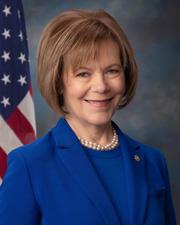0
Seeds and Breeds for the Future Act
3/12/2024, 9:22 PM
Summary of Bill S 2023
The bill proposes the establishment of a grant program that would provide funding to researchers, farmers, and other stakeholders who are working on developing new seeds and breeds that are more resilient, productive, and sustainable. This funding would be used to support research, testing, and implementation of these new seeds and breeds.
Additionally, the bill includes provisions for the protection of intellectual property rights for those who develop new seeds and breeds. This is intended to incentivize innovation in the agricultural industry and ensure that those who invest time and resources into developing new products are able to benefit from their work. Overall, the Seeds and Breeds for the Future Act aims to support the continued growth and advancement of the agricultural industry by promoting innovation and sustainability in the development of new seeds and breeds. It is currently being debated in Congress, with supporters arguing that it will help to ensure a more secure and prosperous future for American agriculture.
Congressional Summary of S 2023
Seeds and Breeds for the Future Act
This bill requires the Department of Agriculture (USDA) to provide competitive research grants for the development of public cultivars (i.e., seeds) and animal breeds. The bill defines a public cultivar and public animal breed as the commercially available uniform end product of a publicly funded breeding program that has been sufficiently tested to demonstrate improved characteristics and stable performance. Further, if intellectual property rights are asserted, they are in the form of plant patents or plant variety protection and not utility patents.
USDA must give priority to high-potential research projects that lead to the release of public cultivars and animal breeds, including those with specified adaptations, features, and benefits (e.g., that are regionally adapted, environmentally resilient, or of indigenous and place-based importance and are endangered).
Any person who receives title to a plant patent or plant variety protection developed with grant funds may grant the exclusive right to use or sell that public cultivar or animal breed to another person only if that person agrees to substantially produce in the United States any cultivars or animals embodying, or produced through the use of, the public cultivar or animal breed.
The bill also establishes a coordinator for public cultivars and animal breeding research within the USDA Research, Education, and Extension Office, whose duties include developing a strategic plan and promoting collaboration.




